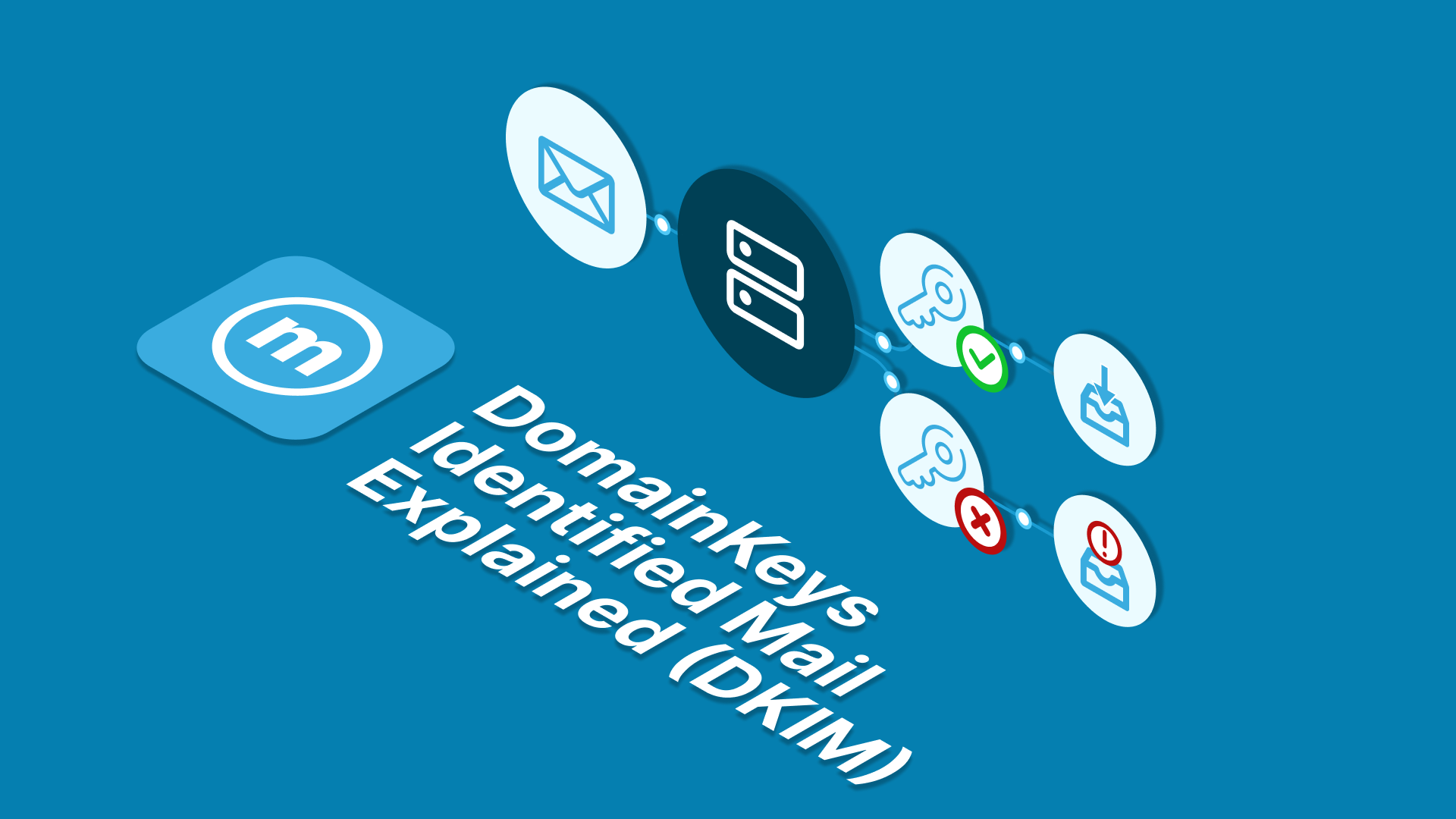Get to Know DKIM, an Important Email Authentication Protocol

Every email you send is never free from the threat of cyber attacks. Cyber attacks on email can include phishing, spam, and malware. So, to overcome this, an email authentication method was created in the form of DomainKeys Identified Mail (DKIM). We will discuss more about DKIM, its benefits, configuration, and other information below.
What is DKIM and How It Works
DomainKeys Identified Mail (DKIM) is an email authentication protocol that allows organizations to take responsibility for their messaging domains by digitally signing outgoing emails. This signature is then attached to the email header, allowing the recipient's email server to verify that the message sent is from a legitimate domain and has not been altered during transit.
This protocol works by using cryptographic key pairs, including public keys and private keys. The public key is published in the associated domain's Domain Name System (DNS) records, while the private key is stored securely on the email sender's server. When an email is sent, the email server uses the private key to generate a unique digital signature for the message. This signature is then inserted into the email header.
Email recipients can use the published public key to verify the included digital signature. If the signature is valid, the recipient knows that the email came from a valid domain and has not been altered in transit. This helps protect recipients from fake and fraudulent emails, such as phishing, spam, and malware
Why is DKIM important?
DKIM is important because it can help protect users from fake emails and fraud. Fake emails, such as phishing and spam, can be used to steal users' personal information, such as usernames, passwords, and credit card numbers. It can help prevent these fake emails by verifying that the email actually comes from the domain it claims to be from.
This authentication method can also help improve the domain reputation. If a domain has a good reputation, then emails sent from that domain will be more likely to be received by recipients. It can help improve a domain's reputation by reducing the number of fraudulent emails sent from that domain.
Apart from that, it can also help improve email deliverability. Emails that cannot be verified with DKIM may be marked as spam by the recipient. DKIM can help improve email deliverability by ensuring that emails can be verified.
Here are some of the benefits of DKIM in more detail:
1. Protects against fake emails
DKIM can help protect users from fraudulent emails, such as phishing and spam. Phishing is a cyber-attack that aims to steal users' personal information, such as usernames, passwords, and credit card numbers. Spam is the sending of unsolicited email messages, often in the form of advertising or promotions.
It works by using digital signatures to ensure that the email actually comes from the domain it claims to be from. If the digital signature is invalid, then the email can be considered a fake email.
2. Increase domain reputation
Domain reputation is an important factor that can influence email deliverability. If a domain has a good reputation, then emails sent from that domain will be more likely to be received by recipients.
DKIM can help improve a domain's reputation by reducing the number of fraudulent emails sent from that domain. If many fake emails are sent from a domain, then the domain will be considered an unsafe domain. This can lower a domain's reputation and make emails sent from that domain more likely to be marked as spam.
3. Increase email deliverability
Email deliverability is the ability of an email to reach the recipient's inbox. Emails that cannot be verified with DKIM may be marked as spam by the recipient.
DKIM can help improve email deliverability by ensuring that emails can be verified with it. If an email can be verified with it, it is more likely to be received by the recipient.
How to Configure DKIM
How DKIM is configured will vary depending on your email service or hosting provider. However, in general, the steps are as follows:
1. Get a DKIM key
A DKIM key is a cryptographic key pair consisting of a public key and a private key. The public key is published in your domain's DNS records, while the private key is stored securely on your email server.
You can obtain the key from your email or hosting service provider. If you use Google Workspace, you can obtain the key from the Google Workspace Admin console.
2. Publish the DKIM public key in your domain's DNS records
The DKIM public key must be published in your domain's DNS records. This DNS record will inform the recipient's email server how to verify the digital signature on emails sent from your domain.
You can publish the public keys in your domain's DNS records by editing your domain's DNS settings. If you don't know how to do it, you can ask your DNS service provider for help.
3. Enable DKIM on your email server
DKIM needs to be enabled on your email server before it can be used to sign emails sent from your domain.
You can enable it on your email server by editing your email server settings. If you don't know how to do this, you can ask your email service provider for help.
4. Do testing
After you configure it, you can test to ensure that the domain key is working properly.
Notes:
Make sure that you store your private key safely since it is a very important key, and if it falls into the wrong hands, an attacker can use it to create fake emails that appear to come from your domain.
Make sure that you always use the latest version of DKIM. There are several different versions of DKIM, and older versions may have security vulnerabilities that attackers can exploit.
How DKIM Record Look Like
The DKIM data format is created with TXT records. You can set it via the Zone Editor menu in cPanel. The following is an example of a DKIM record data display that you can use:
v=1; a=rsa-sha256;
d=mailtarget.co; s=big-email;
h=from:to:subject;
bh=uMixy0BsCqhbru4fqPZQdeZY5Pq865sNAnOAxNgUS0s=;
b=LiIvJeRyqMo0gngiCygwpiKphJjYezb5kXBKCNj8DqRVcCk7obK6OUg4o+EufEbBtRYQfQhgIkx5m70IqA6dP+DBZUcsJyS9C+vm2xRK7qyHi2hUFpYS5pkeiNVoQk/Wk4wZG4tu/g+OA49mS7VX+64FXr79MPwOMRRmJ3lNwJU=
Legend:
v is the DKIM version. Example: v=1
d is the sender's domain name. Example: d=mailtarget.co
s is the selector used by the receiving server to search for DNS records. Example: s=big-email
h is the header field used to create a digital signature. Example: h=from:to:subject
bh is a special mathematical function included in the email body to calculate the signature before the entire email is loaded.
a is the algorithm used for computing digital signatures.
b is the digital signature itself.
DKIM, SPF, and DMARC
DKIM generally comes with SPF and DMARC as part of a comprehensive email security strategy. These three protocols work together to protect users from fake emails and fraud.
DKIM works by adding a digital signature to the email header. This digital signature is unique to the sender's domain and can be used by the recipient to verify that the email came from a legitimate domain.
SPF works by determining which IP addresses are allowed to send email on behalf of a particular domain. If the IP address from which the email is sent is not registered in the domain's SPF records, then the email can be considered a fake email.
DMARC combines DKIM and SPF to provide stronger protection against spoofed emails. DMARC determines how email recipients should react to email messages that cannot be verified with DKIM or SPF.
By enabling DKIM, SPF, and DMARC for your domain, you can help protect yourself from cyberattacks, such as phishing, spam, and malware.
Conclusion
DKIM is an important email authentication protocol to protect users from fake and fraudulent emails. Working together with SPF and DMARC, DKIM provides stronger protection against spoofed emails.
If you're looking for an email service, be sure to check the availability of DKIM configurations. DKIM configuration is an important feature that can help protect you from fake emails and fraud.
Here are some tips for choosing an email service that has DKIM configuration:
- Check the email service provider's website. Many email service providers list their security features on their websites.
- Read reviews from other users. Reviews from other users can provide valuable information about the security features of a particular email service.
- Contact your email service provider. If you are not sure whether an email service has DKIM configured, you can contact the email service provider directly.
By choosing an email service that has DKIM configured, you can help protect yourself from cyberattacks.
Learn more about email security on our blog. Or try sending your email directly through our sandbox.
(V.V)

